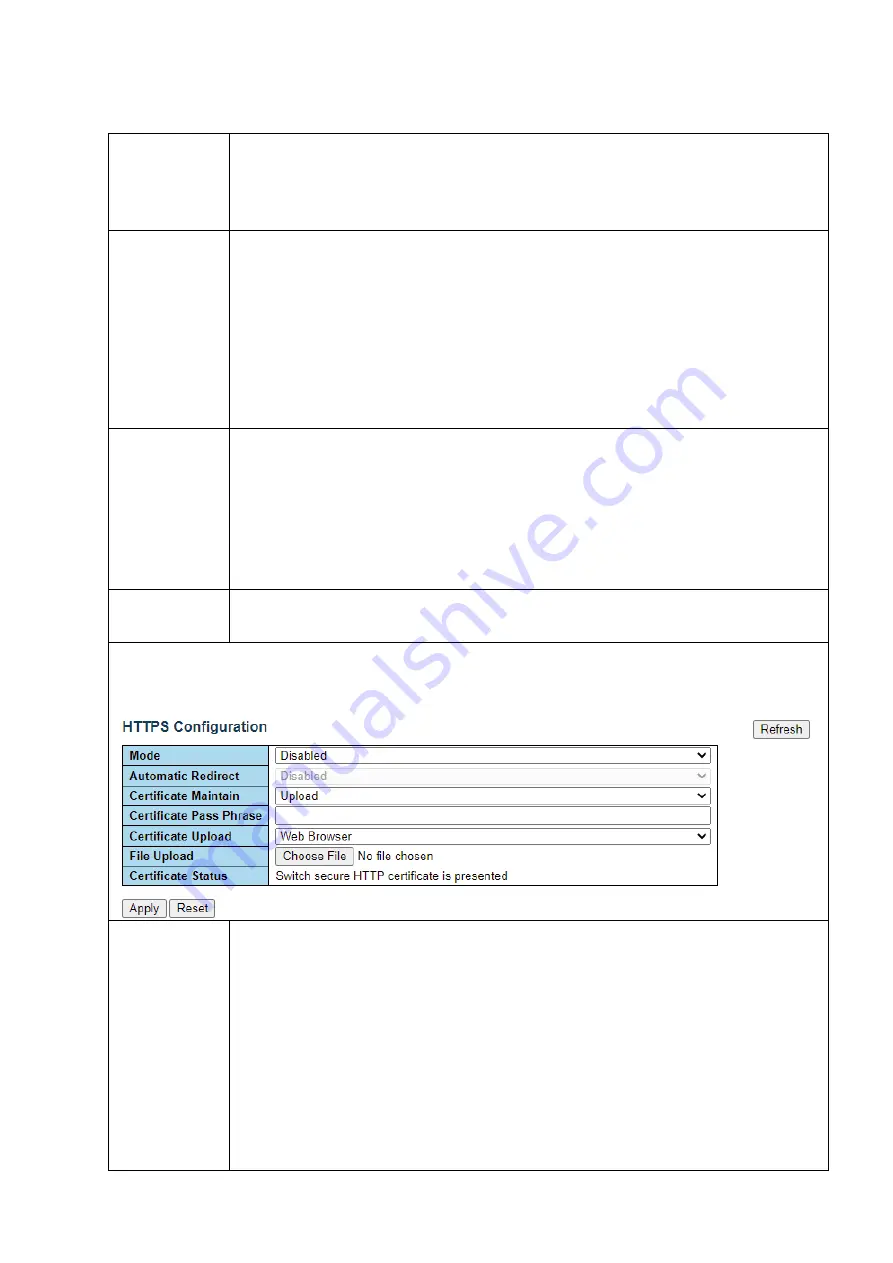
Falcon R-Class | User Guide
101
Table 4-64: HTTPS Configuration Parameters
Mode
Indicate the HTTPS mode operation. Possible modes are:
Enabled
: Enable HTTPS mode operation.
Disabled
: Disable HTTPS mode operation.
Automatic
Redirect
Indicate the HTTPS redirect mode operation. It is only significant when "HTTPS Mode
Enabled" is selected. When the redirect mode is enabled, the HTTP connection will be
redirected to HTTPS connection automatically. Notice that the browser may not allow
the redirect operation due to the security consideration unless the switch certificate is
trusted to the browser. You need to initialize the HTTPS connection manually for this
case.
Possible modes are:
Enabled
: Enable HTTPS redirect mode operation.
Disabled
: Disable HTTPS redirect mode operation
Certificate
Maintain
The operation of certificate maintenance. Possible operations are:
Possible operations are:
•
None
: No operation.
•
Delete
: Delete the current certificate.
•
Upload
: Upload a certificate PEM file. Possible methods are Web Browser or URL.
•
Generate
: Generate a new self-signed RSA certificate
Certificate Pass
Phrase
Enter the pass phrase in this field if your uploading certificate is protected by a specific
passphrase.
By choosing the
Upload
option in the Certificate Maintain, the following display is shown, the parameters
of which are explained below.
Certificate
Upload
Upload a certificate PEM file into the switch. The file should contain the certificate and
private key together. If you have two separated files for saving certificate and private
key. Use the Linux cat command to combine them into a single PEM file. For example,
cat my.cert my.key > my.pem
Notice that the RSA certificate is recommended since most of the new version of
browsers has removed support for DSA in certificate, e.g., Firefox v37 and Chrome v39.
Possible methods are:
Web Browser: Upload a certificate via Web browser. URL: Upload a certificate via URL,
the supported protocols are HTTP, HTTPS, TFTP and FTP. The URL format is
<protocol>://[<username>[:<password>]@]< host>[:<port>][/<path>]/<file_name>.






























